The politics of Cambodia are defined within the framework of a constitutional monarchy, in which the king serves as the head of state, and the prime minister is the head of government. The collapse of communism set in motion events that led to the withdrawal of the Vietnamese armed forces, which had established their presence in the country since the fall of the Khmer Rouge. The 1993 constitution, which is currently in force, was promulgated as a result of the 1991 Paris Peace Agreements, followed by elections organized under the aegis of the United Nations Transitional Authority in Cambodia. The constitution declares Cambodia to be an "independent, sovereign, peaceful, permanently neutral and non-aligned country." The constitution also proclaims a liberal, multiparty democracy in which powers are devolved to the executive, the judiciary and the legislature. However, there is no effective opposition to the Prime Minister Hun Sen, who has been in power since 1985. His Cambodian People's Party won all 125 seats in the National Assembly in 2018 after the banning of opposition party CNRP and KNLF. KNLF became a main opposition exiled in Denmark after CNRP was dissolved. During the communal election in 2022 and the national election in 2023, there were no international observers. The government is considered to be autocratic.

Cambodia or Kampuchea, officially the Kingdom of Cambodia, is a country in the southern Indochinese Peninsula in Southeast Asia, spanning an area of 181,035 square kilometres, bordered by Thailand to the northwest, Laos to the north, Vietnam to the east, and the Gulf of Thailand to the southwest. The capital and largest city is Phnom Penh.

The French protectorate of Cambodia refers to the Kingdom of Cambodia when it was a French protectorate within French Indochina, a collection of Southeast Asian protectorates within the French colonial empire. The protectorate was established in 1863 when the Cambodian King Norodom requested the establishment of a French protectorate over his country, meanwhile Siam renounced suzerainty over Cambodia and officially recognised the French protectorate on Cambodia.
Articles related to Cambodia and Cambodian culture include:
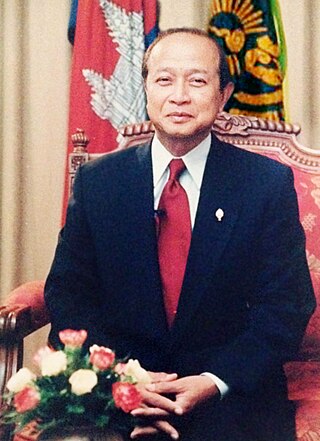
Norodom Ranariddh was a Cambodian prince, politician and law academic. He was the second son of King Norodom Sihanouk of Cambodia and a half-brother of King Norodom Sihamoni. Ranariddh was the president of FUNCINPEC, a Cambodian royalist party. He was also the First Prime Minister of Cambodia following the restoration of the monarchy, serving between 1993 and 1997, and subsequently as the President of the National Assembly between 1998 and 2006.
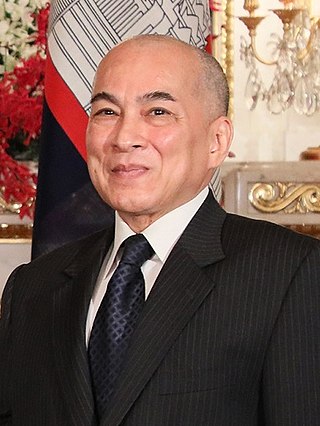
Norodom Sihamoni is King of Cambodia. He became King on 14 October 2004, a week after the abdication of his father, Norodom Sihanouk. He is the eldest son of Norodom Sihanouk and former Queen consort Norodom Monineath and previously served as Cambodia's ambassador to the United Nations and UNESCO, prior to his selection by a nine-member throne council to become the next monarch. Before ascending to the throne, Sihamoni was educated in Czechoslovakia and was known for his work as a cultural ambassador in Europe and as a classical ballet instructor.
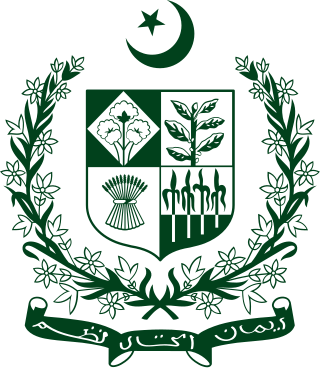
The Government of Pakistan constitutionally known as the Federal Government, commonly known as the Centre is the national government of the Islamic Republic of Pakistan, a federal parliamentary democratic republic consisting of four provinces, two autonomous territories, and one federal territory. Under the Constitution, there are three primary branches of a government: the legislative, whose powers are vested in a bicameral Parliament; the executive, consisting of the President, aided by the Cabinet which is headed by the Prime Minister; and the judiciary, with the Supreme Court.

The Government of Singapore consists of several departments, known as ministries and statutory boards in Singapore. Ministries are led by a member of the Cabinet and deal with state matters that require direct political oversight. The member of the Cabinet heading the ministry is known as the minister, who is supported by a junior minister known as minister of state in Singapore. The administrative management of the ministry is led by a senior civil servant known as permanent secretary.
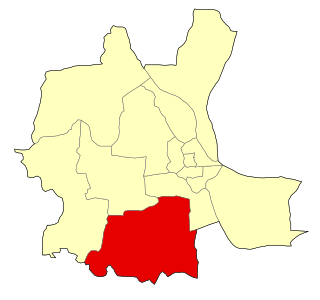
Dangkao is a district (khan) in the southern part of Phnom Penh, Cambodia. The district is subdivided into 13 sangkats and 83 kroms. The district has an area of 197.89 km2. It has a population of 159,772.

The following outline is provided as an overview of and topical guide to Cambodia:
New Khmer Architecture was coined by authors Helen Grant Ross and Darryl Leon Collins to describe an architectural movement in Cambodia during the 1950s and 1960s. The style blended elements of the Modern Movement with two distinctly Cambodian traditions: the grand tradition of Angkor, and the vernacular tradition of domestic buildings. The Kingdom of Cambodia gained independence from France in 1953. Winning the elections in 1955, Prince Norodom Sihanouk founded the Sangkum Reastr Niyum, a political experiment in economic development that went hand in hand with the arts in general, and this innovative architecture in particular. It reached its apotheosis in the 1960s and came abruptly to an end in 1970 with the overthrow of Norodom Sihanouk by Gen. Lon Nol.

The Ministry of Agriculture, Forestry and Fisheries is the government ministry of Cambodia that is responsible for governing activities of agriculture, forestry and the fishery industry in Cambodia.

The Royal University of Agriculture (RUA) is a leading public agricultural university in Cambodia. It is located in Dangkao Section, southwest Phnom Penh. The university is operated by the Ministry of Agriculture, Forestry and Fisheries.
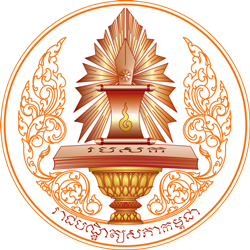
The Royal Academy of Cambodia is the national academy and university of Cambodia. RAC was originally established by a Royal Decree of 25 August 1965 and placed under the Office of the Council of Ministers. However, by the time war broke out in Cambodia in 1970 it had still not started operations, and in the following years it disappeared completely amidst the turmoil of the Khmer Rouge period. Efforts to revive the Royal Academy began in March 1997 with the establishment of the Academy of Cambodian History, later the Academy of History. In 1999 this institution became the Royal Academy of Cambodia (RAC), with five sub institutes - the Institute of Biology, Medicine and Agriculture, the Institute of Culture and Fine Arts, the Institute of Humanities and Social Sciences, the Institute of National Language, and the Institute of Science and Technology.

The Ministries of Jamaica are created at the discretion of the Prime Minister of Jamaica to carry out the functions of Government. As of 2016, the Prime Minister is The Most Honorable Andrew Holness, ON, MP. The agencies of Jamaica are created by both Parliamentary law and assigned to ministers to oversee. The governance structure consists of ministries with portfolios that have agencies that carry out its functions.
The state agencies that form Thailand's public sector consist of several types of functioning bodies. While some agencies established by mandate of the constitution are independent, others are directly or indirectly answerable to the executive of the Royal Thai Government. The majority of these are government agencies, which employ the civil service as well as the military. Others include public organizations and state enterprises.

The Government agencies in Bangladesh are state controlled organizations that act independently to carry out the policies of the Government of Bangladesh. The Government Ministries are relatively small and merely policy-making organizations, allowed to control agencies by policy decisions. Some of the work of the government is carried out through state enterprises or limited companies.












